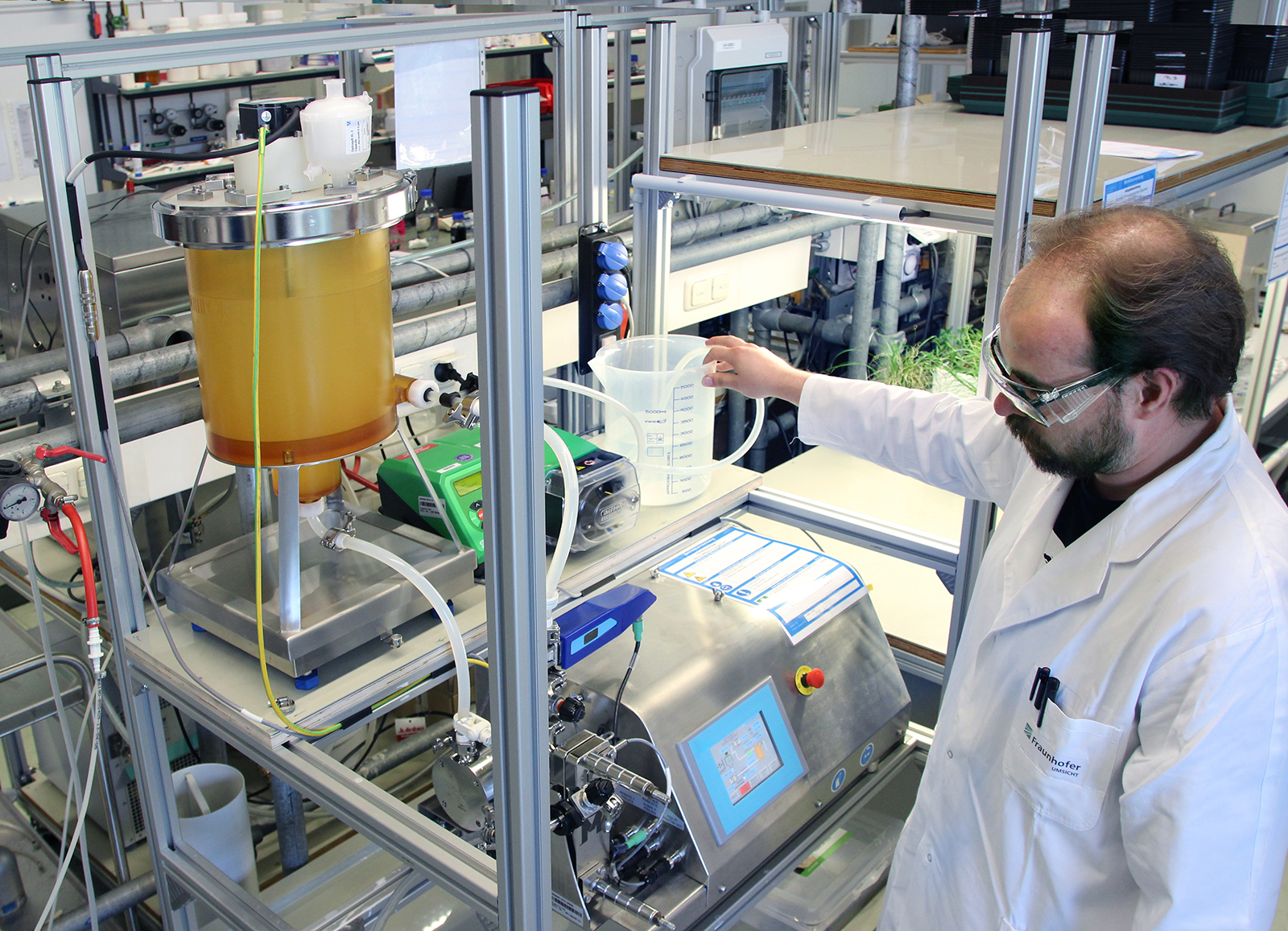Proteins from rice – raw materials instead of waste
Proteins remain after starch is extracted from rice. Until now, this valuable raw material was disposed of by rice starch producers at great expense. A new process is being developed to split proteins into smaller pieces, or peptides, and then clean them. The peptides can be put to good use in products such as cosmetics or nutritional supplements.
Rice contains many valuable nutrients and serves as a staple food for large parts of the world’s population. The rice grain is made up primarily of rice starch. A number of producers extract and resell this starch, for instance as gluten-free or allergen-free baby food. The proteins left over during this process are disposed of by producers in a number of ways, and also at high cost. However, due to their physiological activity, these proteins can be very useful in items such as nutritional supplements or cosmetics. They are an all-natural product that is easily absorbed by the human body.
As a part of the EU project BIORICE, researchers at the Fraunhofer Institute for Environmental, Safety and Energy Technology UMSICHT in Oberhausen are currently working together with other European partners to develop a process that can harness this valuable raw material. “We have taken a by-product that generated additional expenses and converted it into a valuable commodity that can be used in foodstuffs and cosmetics,” says Fraunhofer UMSICHT scientist Dr. Jürgen Grän-Heedfeld. “For this material, that is something new and unique.”
Peptides sorted by size
But how are the proteins processed? First, the Italian project partners at the University of Bologna split the proteins into fragments called peptides. “We separate these peptides according to size, which is to say we sort them,” says Grän-Heedfeld. To do this, the researchers use various membranes that work like filters. First they filter the peptides, which are suspended in an aqueous solution, through a membrane with a pore diameter of 0.2 micrometers. The larger undigested proteins, which can be seen with the naked eye, cannot pass through the membrane. The solution that has passed through is clear, as the peptides contained within are too small to be seen by the human eye. Next, the scientists filter this solution through three additional membranes with different pore diameters, which results in peptides of four different sizes. The advantage of this method is that it employs only physical separation methods without the use of any chemicals, so the end product is completely pure. By now, the scientists have already successfully increased the scale of the process. Instead of the original 15 to 200 milliliters, they are now working with solution volumes of up to 20 liters.
A gentle drying process
In a subsequent step, the scientists dry out the four separated solutions that remain after filtration. To do so, they perform an established and non-damaging process known as freeze-drying, which is also used for the berries found in breakfast cereals, in addition to spray drying. During freeze-drying, a vacuum extracts moisture from the product and the water vapor is frozen onto a condenser. This process is extremely gentle, but also very energy-intensive. The spray-drying process is somewhat rougher on the proteins, but it is also faster. Here, a nozzle sprays the solution into a current of hot air that dries the protein particles in just fractions of a second. What is then left over is the pure peptide, which looks something like powdered milk. “In this way, we can easily manufacture peptides in quantities of 100 to 200 grams in the laboratory,” explains Grän-Heedfeld. The main challenge entails preventing thermal damage and keeping the peptides stable. These are natural products that can easily become discolored or even moldy. “The manufacturing process involves many parameters, and setting them properly requires a great deal of experience and expertise,” says Grän-Heedfeld.
The peptides produced using this process are a completely new product, since nothing else currently on the market is derived from the same raw material. Yet to the human body they are already quite familiar. After all, when we eat rice, our stomach breaks it down into even smaller amino acids, which is to say into the building blocks of peptides and proteins.
At the end of the peptide production chain is an SME enterprise headquartered in Switzerland and Italy which will bring them to market. However, before reaching supermarket shelves as ingredients in creams and nutritional supplements, the peptides must still undergo a number of tests and analyses, primarily with regard to their tolerability and effectiveness.
